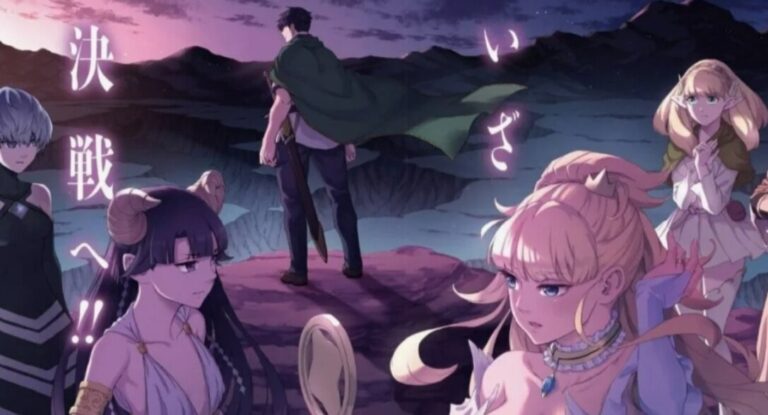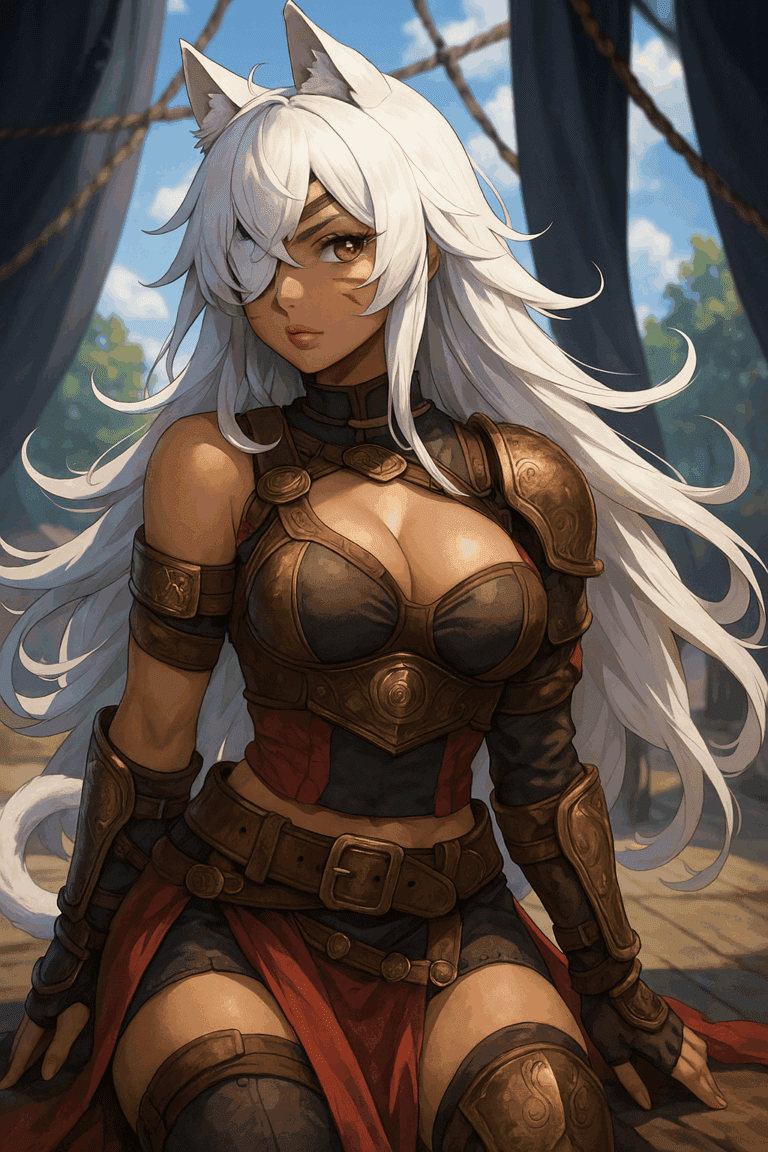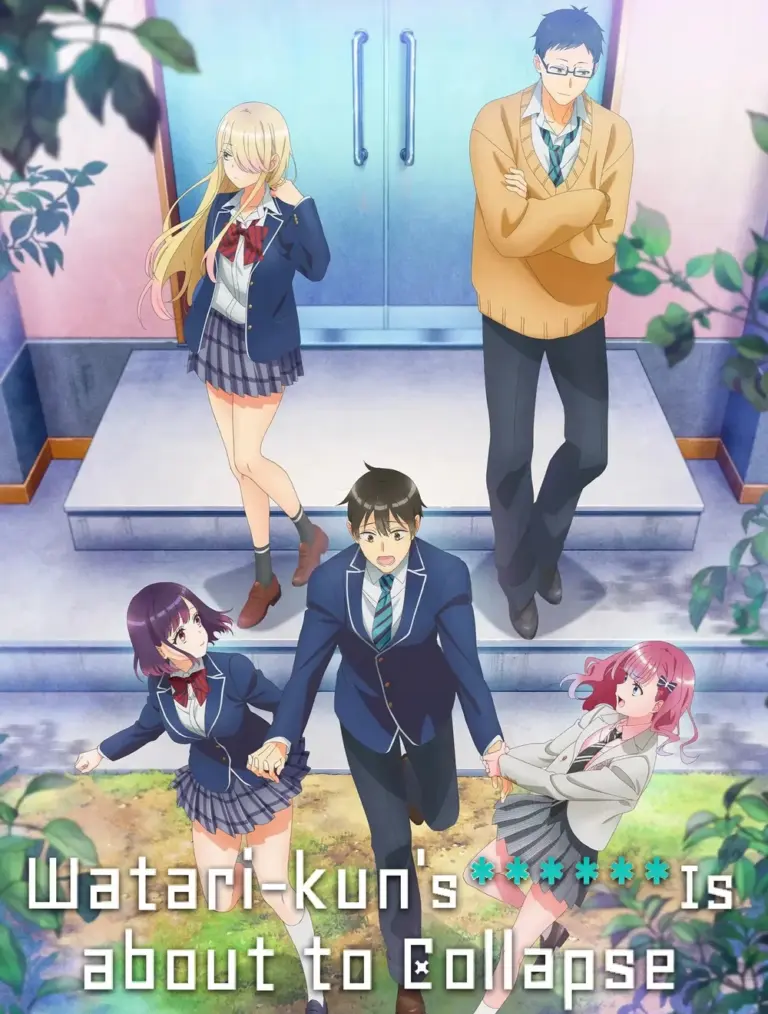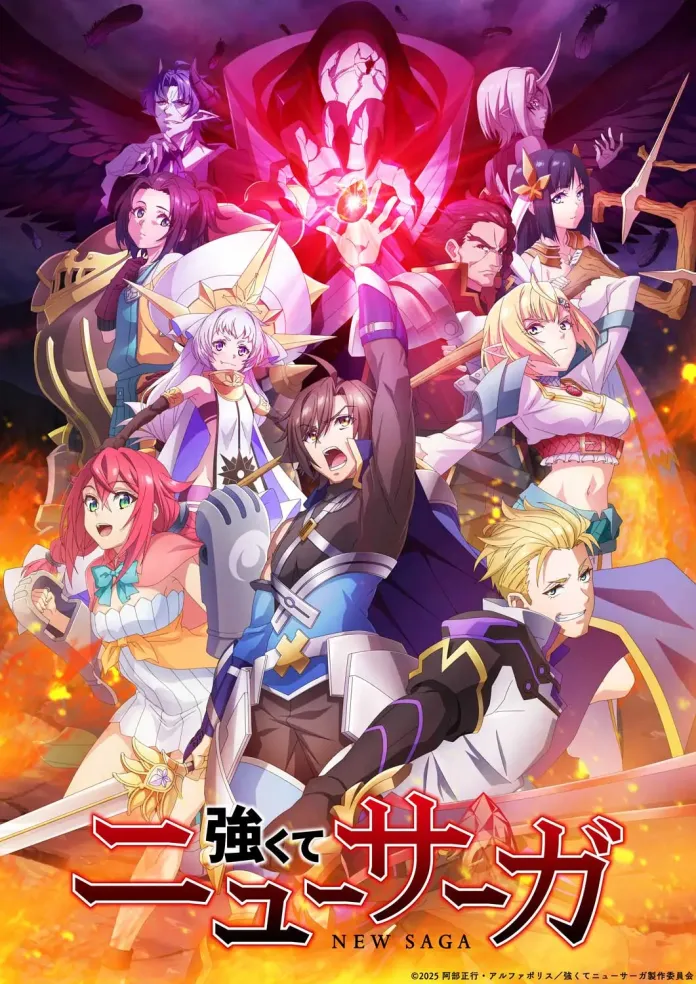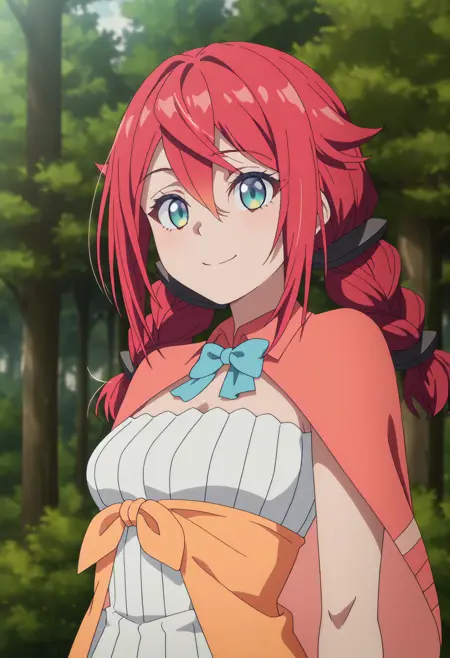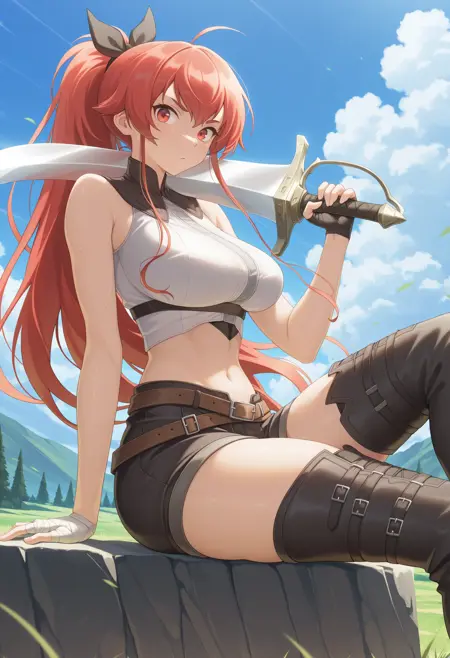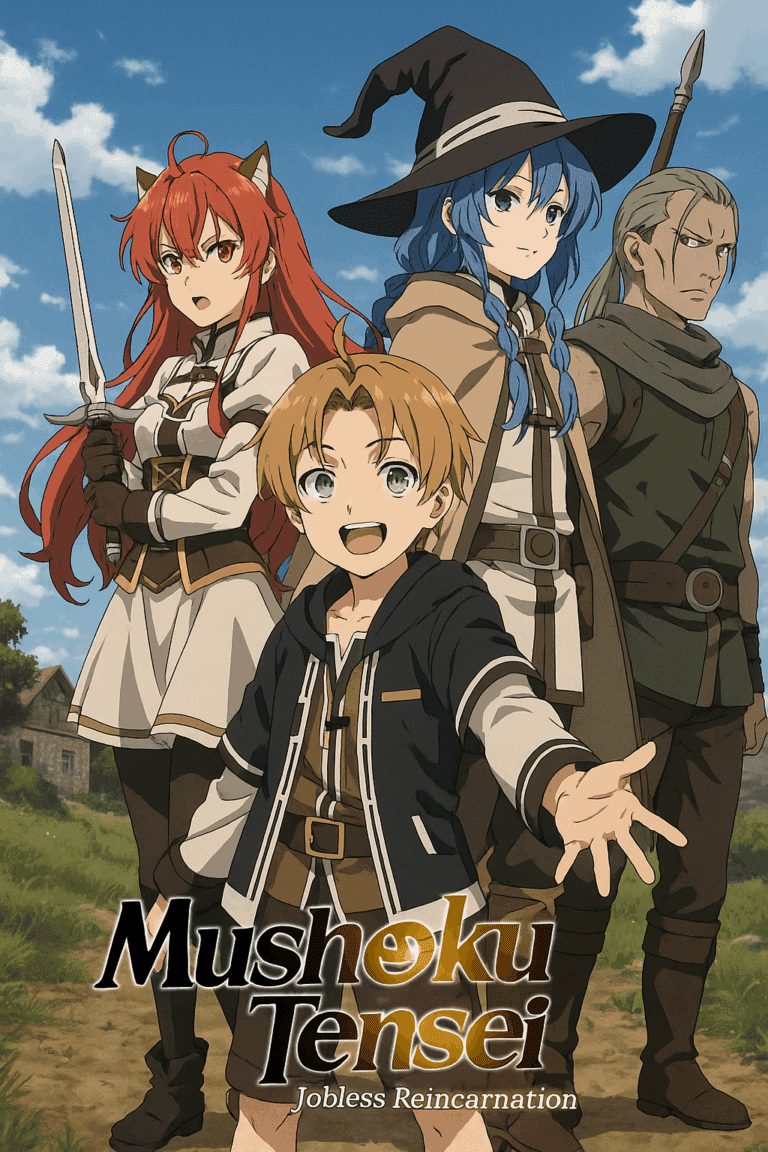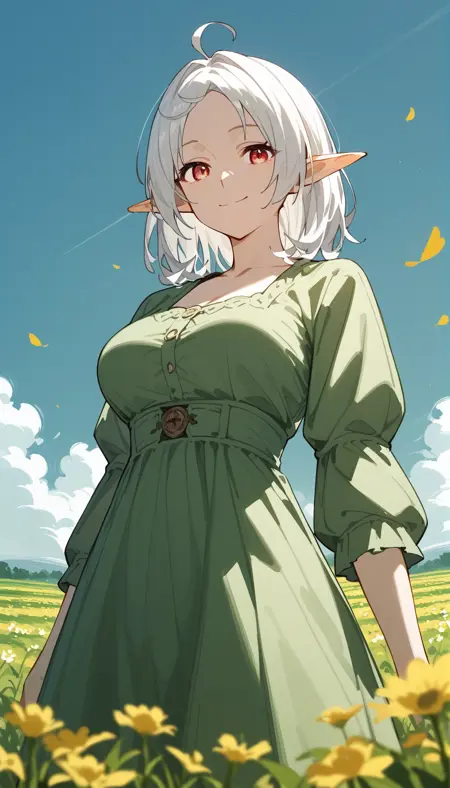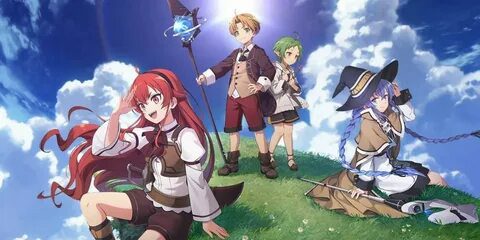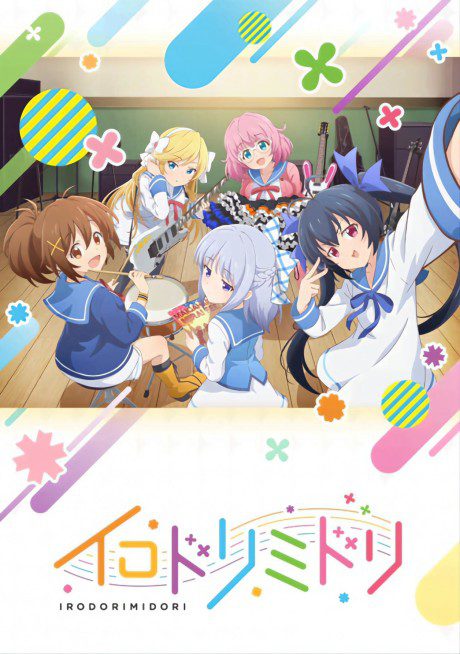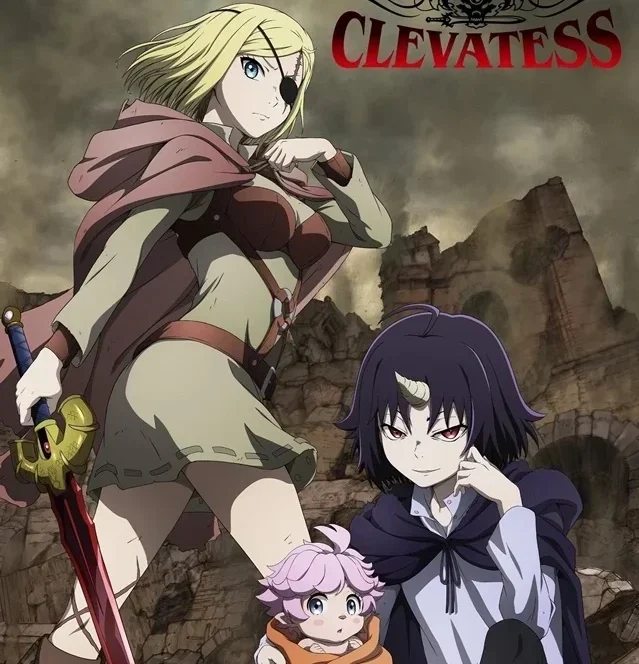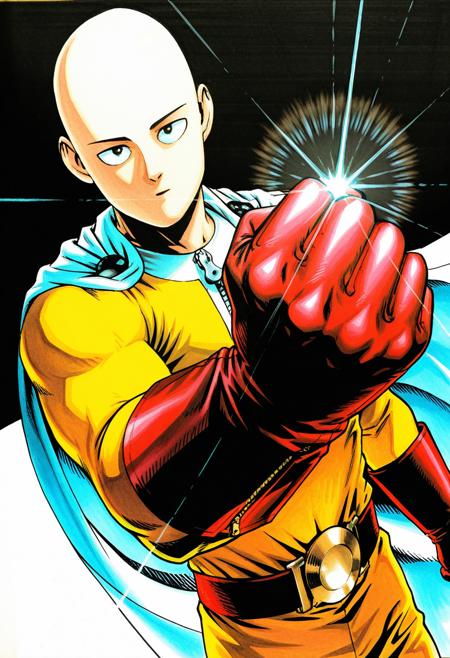What happens when a seemingly weak hunter transforms into the most powerful force the world has ever seen? Solo Leveling, the globally acclaimed webtoon, takes readers on an electrifying journey through a world of dungeons, danger, and unimaginable growth. With its gripping storyline and jaw-dropping artwork, it’s no wonder this series has captivated millions.
From the rise of Sung Jin-Woo to the intricate world-building that keeps fans hooked, Solo Leveling delivers a rollercoaster of emotions. Whether you’re a seasoned manhwa enthusiast or new to the genre, this tale of perseverance and power promises something unforgettable. But does it truly live up to the hype? Let’s dive into what makes this series a standout—and where it might fall short.
Overview Of Solo Leveling
“Solo Leveling” is a South Korean webtoon that has captivated audiences with its unique blend of action, adventure, and fantasy elements. The series, based on a web novel written by Chugong and illustrated by Dubu of Redice Studio, is serialized in a visually striking art style that sets it apart from many others in its genre. Readers are introduced to an alternate reality where “gates” serve as portals connecting the ordinary world to dangerous dungeons filled with monsters. This premise creates a high-stakes environment, perfect for engaging storytelling.
The narrative centers on Sung Jin-Woo, originally portrayed as an E-rank hunter with minimal skills in a world heavily reliant on such abilities. He is regarded as the weakest hunter, often labeled “the world’s weakest,” and his early struggles highlight a stark contrast to the powerful protagonist archetype seen in other series. However, an unexpected event in a dungeon transforms him into a “Player,” granting him the rare ability to see game-like stats, level up, and grow stronger—something unheard of in this universe. This mechanic, resembling elements from RPGs, adds a layer of relatability for gaming enthusiasts and cleverly drives the plot forward. As Jin-Woo progresses, readers witness his relentless pursuit of power, a theme that resonates with those who enjoy stories of underdog triumphs.
A standout feature of “Solo Leveling” is the intricate artwork that brings its world to life. From battle scenes laden with vivid colors and dynamic framing to well-detailed character designs, the visuals consistently enhance the intensity of the plot. The panels often feel cinematic, with moments that flow effortlessly through fast-paced action and emotional pauses. This balance of visual adrenaline and heartfelt moments keeps readers invested in every chapter.
Beyond aesthetics, the series explores themes such as personal sacrifice, ambition, and leadership, subtly weaving emotional depth into its primarily action-focused storyline. Sung Jin-Woo’s transformation isn’t just physical; his evolving perspective on responsibility and humanity adds complexity to his character. These layers make “Solo Leveling” more than just a typical power fantasy, creating a narrative that invites both reflection and excitement.
“Solo Leveling” appeals widely due to its pacing. It often avoids dragging plotlines by delivering fast-moving arcs that keep readers engaged. Each new dungeon encounter and adversary presents fresh challenges, making it difficult to predict outcomes, which adds to the series’ addictive quality. Whether through Sung Jin-Woo’s growth or the ever-expanding lore of the world, there is a sense of continual discovery that charms both casual readers and dedicated fans alike.
Solo Leveling Storyline And Plot
“Solo Leveling” delivers an intricate story that fully immerses readers into its unique universe where danger and opportunity coexist. At the heart of the narrative is the journey of Sung Jin-Woo as he evolves from a powerless individual to an unstoppable hunter, creating an engaging transformation that hooks audiences from the start. The mix of action, mystery, and emotional depth establishes a gripping foundation for the plot while the layered world-building ensures the experience feels fresh and compelling.
Main Plot Highlights
The story begins with Sung Jin-Woo navigating a perilous existence in a world where “Hunters”—individuals with supernatural abilities—venture into dungeon-like “gates” to eradicate monsters. As an E-rank hunter, Sung Jin-Woo is often ridiculed for being the weakest of his kind and barely survives these dangerous missions. Everything changes during a life-threatening dungeon raid when he encounters the mysterious “System,” a game-like interface that enables him to grow stronger through leveling up.
This core mechanic adds an exciting dynamic to the storyline, drawing parallels to RPG-style games where growth feels rewarding and earned. Readers follow Sung Jin-Woo as he embarks on a quest to uncover the secrets behind the “System” and his newfound powers. Along the way, tension builds as more intricate layers of the world are revealed, including the presence of shadowy conspiracies, deity-like entities, and rival organizations with hidden agendas. The stakes continually rise, keeping the narrative engaging and unpredictable.
Rapid pacing and unexpected twists make every plot progression feel momentous. Whether it’s a sudden betrayal during a raid or the introduction of a dungeon boss with overwhelming force, the story consistently keeps readers on edge. Nevertheless, moments of introspection and downtime are effectively woven in, allowing Sung Jinwoo to reflect on his sacrifices and ambitions, making the plot feel emotionally grounded without becoming overly sentimental.
Character Development
At its core, the evolution of Sung Jin-Woo is the heartbeat of “Solo Leveling.” Initially portrayed as timid and self-sacrificing, his character undergoes a dramatic shift as the “System” empowers him to break free from his limitations. This transformation is gradual yet impactful, showcasing his resilience in adapting to his newfound strength while holding onto his core values. Transcending the trope of a predictable anti-hero, Jin-Woo maintains a sense of morality even as his power grows to godlike proportions.
Secondary characters also contribute to the depth of the story. Figures like Cha Hae-In, the S-rank hunter with a mysterious aura, bring layers of interpersonal relationships and potential romance into the mix. Her initial skepticism of Sung Jin-Woo evolves into mutual respect and admiration, adding a softer dimension to the otherwise fast-paced and combat-heavy narrative. Additionally, supporting characters such as Jin-Woo’s loving family, including his devoted mother and protective younger sister, ground the plot in relatable emotional stakes.
The antagonists in the plot are more than just faceless challenges. Many are fleshed out with backstories and motivations that go beyond being an obstacle—examples include the Monarchs, whose enigmatic presence drives higher stakes. This balance of moral ambiguity and outright villainy creates a complex dynamic where Sung Jinwoo must navigate both external battles and an internal struggle with his humanity as his power threatens to isolate him from those he protects.
Together, these elements ensure that both the storyline and characters in “Solo Leveling” resonate deeply with readers. Whether exploring themes of survival, ambition, or connection, the series strikes a compelling balance that keeps audiences invested in every chapter.
Waifu Highlights
One of the most compelling aspects of “Solo Leveling” is its diverse cast of characters, including several “Waifu” figures who capture fans’ hearts. Below, we highlight two standout Waifu characters and why they shine.
Cha Hae-In
| Attribute | Details |
| Appearance | Blonde hair, elegant features, striking eyes. |
| Personality | Strong, disciplined, yet compassionate. |
| Abilities | S-Rank Hunter, exceptional swordsmanship, heightened sense of smell. |
| Waifu Type | “Cool Beauty” |
Why She’s a Waifu
Cha Hae-In’s dedication to her craft as an S-rank hunter and her sense of justice make her an admirable character. Despite her stoic exterior, she harbors a soft side, especially toward Sung Jinwoo. Her unique ability to sense other hunters’ auras adds a layer of intrigue to her character.
Esil Radiru
| Attribute | Details |
| Appearance | Silver hair, petite frame, otherworldly beauty. |
| Personality | Loyal, curious, and eager to prove herself. |
| Abilities | Skilled mage, exceptional intelligence. |
| Waifu Type | “Loyal Companion” |
Why She’s a Waifu
Esil is a high-ranking member of a dungeon race who aligns herself with Jinwoo. Her loyalty and determination to aid Jinwoo, despite their differing origins, make her an endearing character. Her magical prowess and charming personality ensure she stands out among the supporting cast.
Solo Leveling Episode Details
| Aspect | Details |
|---|---|
| Title | Solo Leveling |
| Original Author | Chugong |
| Genres | Action, Adventure, Fantasy |
| Studio | A-1 Pictures |
| Director | Shunsuke Nakashige |
| Producers | Aniplex, Studio N, and Crunchyroll |
| Episodes | 12 (Season 1), 12 (Season 2) |
| Release Date | January 2025 (anticipated completion) |
| Streaming | Crunchyroll |
Here is a list of episodes for both seasons:
Season 1 (2024):
| Episode Number | Title | Original Air Date |
|---|---|---|
| 1 | “I’m Used to It” | January 7, 2024 |
| 2 | “If I Had One More Chance” | January 14, 2024 |
| 3 | “It’s Like a Game” | January 21, 2024 |
| 4 | “I’ve Gotta Get Stronger” | January 28, 2024 |
| 5 | “A Pretty Good Deal” | February 4, 2024 |
| 6 | “The Real Hunt Begins” | February 11, 2024 |
| 7 | “Let’s See How Far I Can Go” | February 18, 2024 |
| 8 | “This Is Frustrating” | March 3, 2024 |
| 9 | “You’ve Been Hiding Your Skills” | March 10, 2024 |
| 10 | “What Is This, a Picnic?” | March 17, 2024 |
| 11 | “A Knight Who Defends an Empty Throne” | March 24, 2024 |
| 12 | “Arise” | March 31, 2024 |
Season 2: Arise from the Shadow (2025):
| Episode Number | Title | Original Air Date |
|---|---|---|
| 13 | “You Aren’t E-Rank, Are You” | January 5, 2025 |
| 14 | “I Suppose You Aren’t Aware” | January 11, 2025 |
| 15 | “Still a Long Way to Go” | January 18, 2025 |
| 16 | “Episode 16” | January 25, 2025 |
| 17 | “Episode 17” | February 1, 2025 |
| 18 | “Episode 18” | February 8, 2025 |
| 19 | “Episode 19” | February 15, 2025 |
| 20 | “Episode 20” | February 22, 2025 |
| 21 | “Episode 21” | March 1, 2025 |
| 22 | “Episode 22” | March 8, 2025 |
| 23 | “Episode 23” | March 15, 2025 |
| 24 | “Episode 24” | March 22, 2025 |
| 25 | “Episode 25” | March 29, 2025 |
“Solo Leveling” immerses viewers in a world where hunters, people with extraordinary abilities, battle monsters emerging from mysterious gates. The protagonist, Sung Jin-Woo, begins as an E-rank hunter—the weakest of them all. However, after a near-death experience, he acquires a unique system that allows him to “level up,” unlike anyone else in the world. This transformation from underdog to overpowered warrior forms the crux of the story.
Art And Animation
The artistry and animation in “Solo Leveling” are a cornerstone of its massive appeal. Vibrant visuals and meticulously crafted designs elevate the storytelling, immersing readers in an enthralling and dynamic world.
Visual Quality
The visual quality of “Solo Leveling” is nothing short of spectacular. Each panel feels like a freeze-frame from an epic cinematic sequence, with precise details bringing the characters and their environments to life. The bright, bold colors contrast masterfully with darker tones during intense or emotionally heavy scenes, representing the shifting moods of the narrative. For instance, Sung Jin-Woo’s transformation scenes are drenched in shadowy hues and glowing effects, emphasizing his evolution into a formidable force.
Lighting plays a vital role in amplifying the atmosphere. Glowing runes, shimmering weapons, and flickering flames create a sense of mystique and danger, immersing readers in otherworldly dungeons. The battles are another standout feature — the fluidity and choreography make every strike, maneuver, and clash seem like it’s in motion. Readers often describe moments like the showdown with high-level monsters or Jin-Woo’s shadow army surge as visually unforgettable due to this sleek execution.
Moreover, small background details, like worn dungeon walls or the elaborate designs of magical weapons, showcase the illustrators’ commitment to crafting a believable and enchanting universe. The webcomic’s high-resolution quality allows even casual readers to notice intricate texture work and vivid imagery that enhance the immersion.
Style And Design
“Solo Leveling” boasts an art style that seamlessly marries modern aesthetics with a touch of the fantastical. The character designs serve as a major highlight. Sung Jin-Woo’s look evolves alongside his character, starting from a frail and forgotten figure to a sharp, commanding presence that exudes confidence and strength. His shadow soldiers are another testament to the creative artistry, as each one of them carries a unique design, ranging from sleek and ghostly knights to towering, monstrous beasts, lending a sense of individuality even to the secondary visuals.
The designs of the antagonists and monsters are equally impressive. Their intricate styles are not randomly fabricated but feel tailored to their roles, whether they are menacing hunt bosses or mysterious figures from the System. For example, the intricate patterns on dungeon guardians exude a godlike energy, invoking both intimidation and awe.
The layout and framing in the series enhance the dramatic effect of each scene. Panels frequently shift between wide, sweeping shots to isolate key emotional beats, drawing readers closer to the narrative. This cinematic framing style complements action-heavy sequences and amplifies tension during quiet, reflective moments.
Moreover, the design of Jin-Woo’s game-like System interface — with floating stat windows, quest notifications, and skill displays — adds a layer of interactivity that resonates with fans of RPGs. Even these simple elements are designed with clear fonts and futuristic details, ensuring they blend seamlessly with the series’ world.
Together, the striking visual quality and meticulous design lend “Solo Leveling” an edge that has not only captivated its existing audience but also set it apart as a spectacle among other webtoons.
Solo Leveling Pros
“Solo Leveling” excels in blending an immersive plot with stunning visuals, creating a compelling experience for readers. The storyline stands out because of its unique progression system, where the protagonist, Sung Jin-Woo, levels up like a character in a role-playing game. This mechanic appeals to gaming enthusiasts and adds a layer of excitement to the narrative, keeping readers engaged as they anticipate his next transformation.
The character development is exceptional. Sung Jin-Woo’s evolution from a timid, self-doubting hunter to a confident, formidable leader is portrayed with depth and nuance. His growing strength never overshadows his human vulnerabilities, making his journey relatable. Secondary characters such as Cha Hae-In not only enrich the narrative but also introduce emotional connections that enhance the reader’s investment in the story.
The artwork of “Solo Leveling” is another major strength. Each panel is crafted with meticulous attention to detail, adding a cinematic quality to the storytelling. Vibrant color palettes, dynamic action sequences, and dramatic lighting create stunning visuals that immerse the audience. The designs of the dungeons and monsters showcase imaginative thought, each fitting seamlessly into the series’ fantastical setting.
The pacing is skillfully executed, with quick-moving arcs that ensure the story never feels stagnant. Each challenge Sung Jin-Woo faces feels fresh, introducing unexpected twists that build suspense and keep readers on edge. The balance of action, mystery, and emotional depth is precisely tuned, making the series hard to put down.
“Solo Leveling” also shines in its exploration of themes like ambition and sacrifice. It delves into the emotional weight of Sung Jin-Woo’s choices, allowing readers to reflect on personal growth and resilience in the face of adversity.
Solo Leveling Cons
While “Solo Leveling” excels in many areas, several aspects may leave readers with mixed feelings. One prominent criticism is its pacing in later chapters. While the early story arcs maintain a perfect balance of suspense and action, the latter parts tend to feel rushed. Key storylines, such as those involving antagonists or complex world-building elements, are often resolved quickly, giving readers less time to immerse themselves in the stakes and emotional weight of the plot. This can make these moments feel less impactful compared to the earlier, well-developed arcs.
Another concern lies in the repetitive nature of some plot devices. Sung Jin-Woo’s rapid rise in power, while thrilling at first, can lead to less tension as there are fewer challenges that genuinely threaten him. Readers may notice that the series leans heavily on showcasing Jin-Woo’s dominance, which can occasionally overshadow opportunities for deeper narrative complexity or character development within secondary roles.
The character development beyond Sung Jin-Woo also falls short in some areas. While secondary characters like Cha Hae-In and Jin-Woo’s family play pivotal roles, many supporting characters lack depth, and some feel underutilized. Their backstories and motivations are sometimes glossed over, which diminishes the opportunity to create stronger emotional connections with the broader cast. Those expecting a fully fleshed-out ensemble might find this to be a drawback.
The focus on action-packed scenes and spectacle sometimes overshadows thematic exploration. Issues like morality and the emotional cost of power are introduced but are not consistently or deeply analyzed throughout the series. Readers looking for narrative depth or philosophical reflections may find these elements underexplored in the context of this otherwise captivating story.
Themes And World-building
“Solo Leveling” masterfully combines themes of transformation, power, and identity with its intricately crafted world. Central to the narrative is the theme of personal growth, embodied in Sung Jin-Woo’s journey from being the weakest hunter to a figure of immense strength. This transformation reflects perseverance and the potential for self-improvement, resonating deeply with readers who see in him the metaphor for overcoming life’s challenges. His struggles and triumphs serve as a compelling exploration of ambition, sacrifice, and the emotional toll of rising above one’s perceived limitations.
The world-building of “Solo Leveling” enhances its appeal by creating an immersive, alternate reality where “gates” link the human world to perilous dungeons filled with monsters. These gates are more than just a setting; they are a clever narrative device that shapes societal structures and human behavior. Hunters, like Jin-Woo, are integral to this world as they risk their lives combating threats, while the existence of dungeons creates a unique economy and power hierarchy. This layered system mirrors real-world challenges, such as inequality and ambition, adding a sense of relatability to the story.
A particularly innovative aspect of the world-building is the incorporation of RPG-style mechanics that bring a gamified structure to the narrative. The “System” provides Sung Jin-Woo with level-ups, stats, and quests, making his experiences feel interactive and engaging. This gamification creates a sense of progression that mirrors the structure of popular role-playing games, allowing readers to feel connected as they follow his growth and strategy through each challenge.
Themes of humanity and morality run deep within the story, as Jin-Woo frequently grapples with decisions that test his values. His growing power often leads to moral dilemmas, questioning whether the pursuit of strength is worth its cost. This tension adds emotional weight to the fast-paced action and stunning visuals, ensuring the narrative remains thought-provoking within its fantastical setting. Through its rich themes and meticulous world-building, “Solo Leveling” delivers not just a story but an experience that keeps readers engaged from start to finish.
Comparison To Other Works
“Solo Leveling” stands out within the realm of webtoons and manhwa, offering an experience that echoes familiar elements while carving its own niche through unique storytelling and world-building.
Similar Manhwa Or Webtoons
For readers familiar with action-driven manhwa, parallels can be drawn between “Solo Leveling” and works such as “The Beginning After The End” and “Tower of God.” Like “Solo Leveling,” these series introduce protagonists who rise against overwhelming odds, navigating complex worlds filled with peril and intrigue. “The Beginning After The End” shares themes of growth, as its protagonist reincarnates with a past life’s wisdom to guide his rise in a fantastical world. Similarly, “Tower of God” revolves around scaling life-threatening challenges, echoing the dungeon-clearing arcs that are central to “Solo Leveling.”
While these series share overlapping themes, “Solo Leveling” differentiates itself with its RPG-inspired mechanics. Few series feature a protagonist gaining abilities through an interactive “System,” complete with visible stats and inventory. Even in titles where characters grow stronger, the gamification element of “Solo Leveling” adds an extra layer of engagement that distinctly appeals to gaming enthusiasts. In comparison, “Tower of God” relies more on its intricate power hierarchy and sprawling world-building, while “The Beginning After The End” leans into character-driven emotional beats and multi-world lore.
Other noteworthy comparisons include “Omniscient Reader’s Viewpoint,” which also examines the interplay between power and survival within a given system. There, the focus lies more on meta-narrative and unpredictability, deviating from “Solo Leveling’s” straightforward yet engrossing hero’s journey. While these works scratch similar itches for fans of action and strategy, “Solo Leveling’s” visuals and pacing continue to set it apart from its contemporaries.
Unique Aspects Of Solo Leveling
“Solo Leveling” distinguishes itself by blending action-packed storytelling with a visually immersive style that few other webtoons rival. The RPG-inspired mechanics provide a fresh and interactive narrative tool, allowing readers to feel as if they’re leveling up alongside Sung Jin-Woo. This system, complete with quests, rewards, and penalties, adds structure without burdening the plot with excessive explanations. By marrying game-like progression with high-stakes action, the series maintains a balance that ensures readability while retaining depth.
Another unique aspect is its protagonist’s solitary transformation. Many manhwa push group dynamics or alliances to achieve their narrative goals. In contrast, Sung Jin-Woo’s journey emphasizes individual growth, a theme underscored by his evolving title of “Solo Player.” This singular focus resonates with readers aspiring for personal improvement, highlighting themes of resilience and introspection.
The art, too, plays a pivotal role in defining the series. Each scene feels cinematic, with dynamic character movements and vibrant color palettes elevating its storytelling. The stark contrasts between light and shadow amplify emotional moments, especially during climactic battles. Unlike others in the genre, “Solo Leveling” often uses visual silence—slower panels without dialogue—to convey tension, granting its action scenes more impact.
Finally, the narrative consistently returns to the moral cost of power. While other works might glorify strength without addressing its emotional toll, “Solo Leveling” challenges Sung Jin-Woo to confront his humanity amidst his overwhelming growth. Themes of sacrifice, including his relationships and values, keep the story grounded, ensuring it resonates on a personal level despite its supernatural premise. This blend of relatable struggles and fantastical adventuring solidifies “Solo Leveling” as a standout in its genre.
User Experience And Popularity
Reader Engagement
“Solo Leveling” captivates its audience with its fast-paced storytelling and relatable RPG-inspired mechanics, creating a reading experience that feels both exciting and immersive. The series employs cliffhangers at the end of chapters, keeping readers eager to find out what happens next. Sung Jin-Woo’s transformation from a vulnerable hunter to a formidable powerhouse mirrors the satisfaction of leveling up in a video game, which resonates strongly with fans of gaming culture. This element keeps readers deeply involved, as many can relate to the joy of progress and the challenges that come with it.
The webtoon also excels in presenting high-stakes scenarios that demand readers’ attention through intricate panel layouts and dialogue pacing. Complex character arcs, such as Jin-Woo’s internal struggle with power and morality, invite readers to emotionally invest in his journey. These emotional highs and lows ensure that readers are not just passively consuming the story but actively connecting with it.
Interactive discussions among fans in forums and social media platforms further amplify engagement. Readers often theorize about plot twists or speculate about upcoming arcs, showcasing the series’ ability to spark conversation. Its cross-medium appeal, with animated adaptations and novels complementing the webtoon, enhances the audience’s connection to the story by offering multiple ways to experience its layered universe.
Fan Reception
The popularity of “Solo Leveling” is a testament to its widespread appeal across different fan communities. Originally a web novel, its webtoon adaptation skyrocketed in popularity, quickly becoming one of the most-read manhwas globally. Fans frequently praise the artwork, describing it as cinematic and visually mesmerizing, which elevates the overall reading experience. The meticulous attention to detail in character designs, dungeons, and battles sets it apart as one of the best visual narratives in its genre.
Many fans relate to Sung Jin-Woo’s character progression, seeing it as a metaphor for personal growth and resilience. This connection keeps readers loyal, as they find both entertainment and inspiration within the story. Critics have also lauded the series for blending traditional fantasy elements with modern RPG mechanics, crafting a narrative that feels fresh yet familiar.
Nevertheless, some fans have voiced concerns about the later chapters, mentioning rushed storylines or underdeveloped secondary characters. Despite these critiques, “Solo Leveling” maintains a dedicated fanbase, with online communities continuously celebrating its achievements through fan art, cosplay, and discussions. Its massive success has also led to announcements of an animated series, proving its ongoing influence and drawing in new audiences eager to join the journey of Sung Jin-Woo.
Final Verdict
“Solo Leveling” stands as a remarkable example of storytelling, blending breathtaking visuals with a gripping narrative that resonates deeply with readers. Its unique RPG-inspired mechanics and the evolution of Sung Jin-Woo create an engaging experience that keeps fans coming back for more.
While it has its flaws, such as rushed pacing in later chapters and underdeveloped secondary characters, these shortcomings don’t overshadow its strengths. The series continues to captivate audiences with its emotional depth, dynamic action, and immersive world-building.
For fans of action-packed webtoons with compelling character growth and stunning artistry, “Solo Leveling” is a must-read that leaves a lasting impression.




